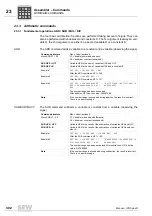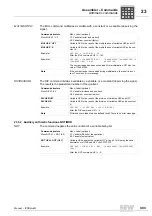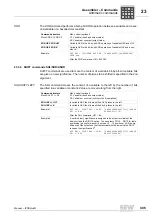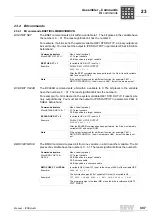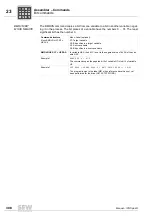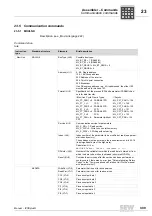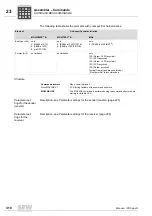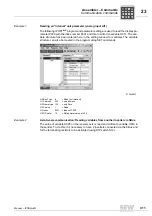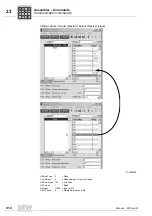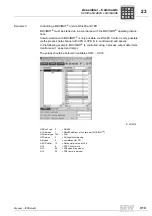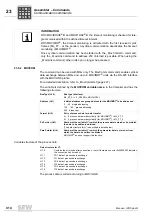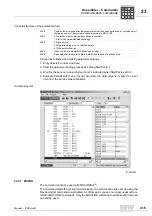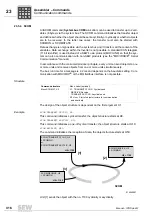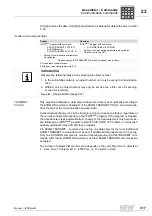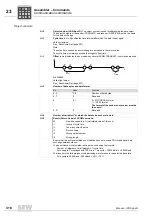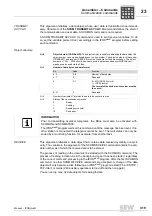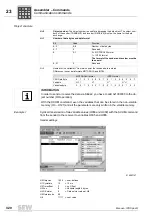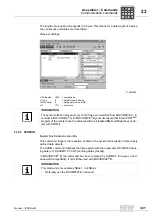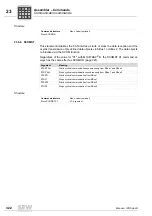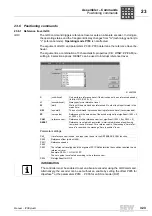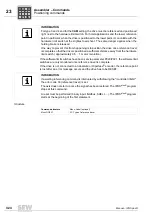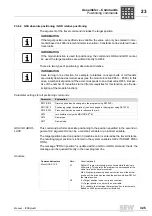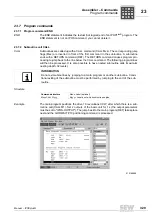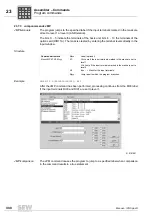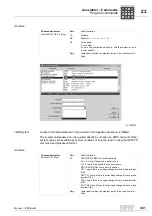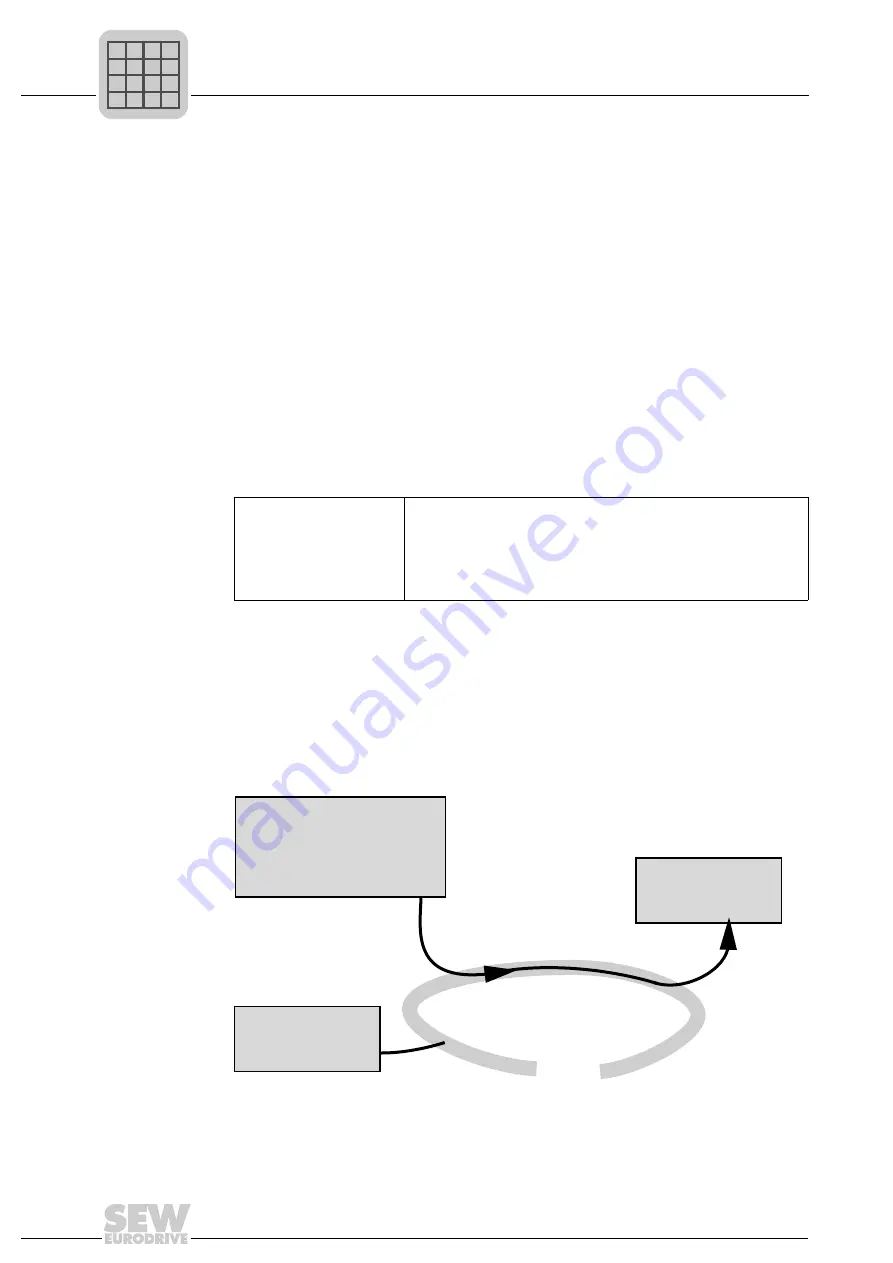
316
Manual – IPOSplus®
23
Communication commands
Assembler – Commands
23.5.4 SCOM
An SCOM command (
System bus COM
munication) can be used to transfer up to 2 vari-
ables (8 bytes) via the system bus. The SCOM command initializes the transfer object
and defines whether the object should be sent acyclically or cyclically or whether objects
are to be received. In the latter two cases, the transfer must also be started with
SCOMON or SCOMSTATE.
Data exchange is only possible via the system bus and it transfers all the content of the
variables. Data exchange within the inverter is not possible. A standard CAN telegram
(11 bit identifier) is used instead of a SEW's own protocol (MOVILINK) so that the sys-
tem can also communication with non-SEW products (see the "MOVIDRIVE
®
Serial
Communication" manual).
In accordance with the consumer/producer principle, every unit can send objects to one
or more units and receive objects from one or more units simultaneously.
The bus run time for a message is
≤
2 ms and depends on the baudrate setting. Com-
munication with MOVIMOT
®
or the MQ fieldbus interface is not possible.
Structure
The design of the object structure is dependent on the first argument X1.
Example
SCOM TRANSMIT CYCLIC, H0
This command initializes cyclical transfer; the object structure starts at H0.
SCOM TRANSMIT ACYCLIC, H10
This command initializes a one-off cyclical transfer; the object structure starts at H10.
SCOM RECEIVE, H50
The command initializes the reception of data, the object structure starts at H50.
Unit [1] sends the object with the no. 1100 cyclically or acyclically.
Command structure
Mxxx SCOM X1, X2
Mxxx: Label (optional)
X1: TRANSMIT CYCLIC: Cyclical send
RECEIVE: Receive
TRANSMIT ACYCLIC: Acyclical send
X2 Hxx = Start of object structure for communication
and user data
514545547
SCOM RECEIVE, H0
+ SCOMON
H0 = 1100
SCOM
SCOM RECEIVE, H0
+ SCOMON
H0 = 1102
SCOM TRANSMIT CYCLIC, H0
+ SCOMON
or
SCOM TRANSMIT ACYCLIC, H0
H0 = 1100
[1]
[2]
[3]
P
i
f
kVA
Hz
n
P
i
f
kVA
Hz
n

